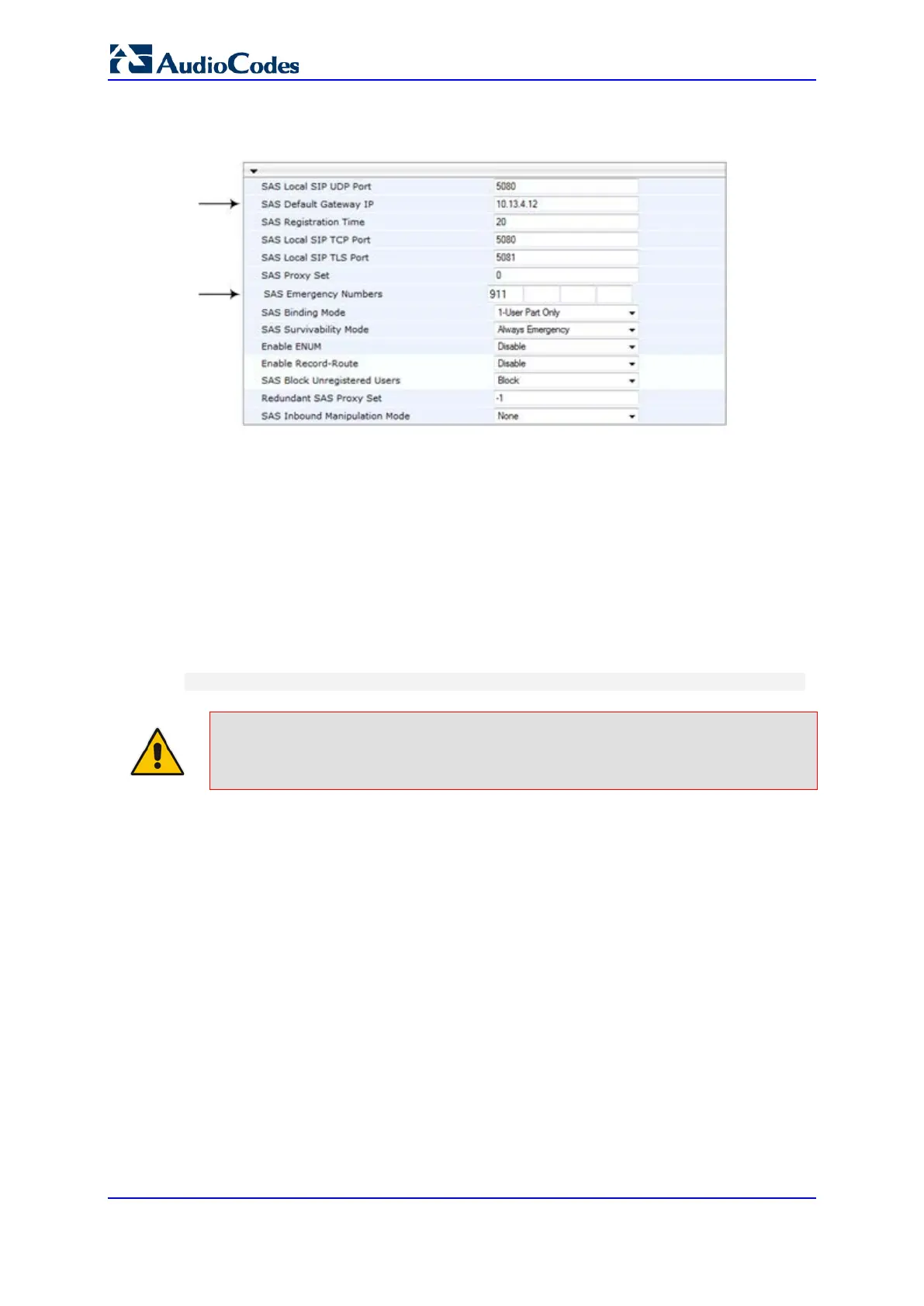User's Manual 382 Document #: LTRT-68822
Mediant 2000
3. In the 'SAS Emergency Numbers' field, enter an emergency number in each field box.
Figure 28-10: Configuring SAS Emergency Numbers
4. Click Submit to apply your changes.
28.5.6 Adding SIP Record-Route Header to SIP INVITE
You can configure SAS to add the SIP Record-Route header to SIP requests (e.g. INVITE)
received from enterprise UAs. SAS then sends the request with this header to the proxy.
The Record-Route header includes the IP address of the SAS application. This ensures
that future requests in the SIP dialog session from the proxy to the UAs are routed through
the SAS application. If not configured, future request within the dialog from the proxy are
sent directly to the UAs (and do not traverse SAS).
When this feature is enabled, the SIP Record-Route header includes the URI "lr"
parameter, indicating loose routing, as shown in the following example:
Record-Route: <sip:server10.biloxi.com;lr>
Note: This feature is applicable only to the SAS Outbound mode.
To enable the Record-Route header:
1. Open the SAS Configuration page (Configuration tab > VoIP menu > SAS > Stand
Alone Survivability).
2. From the ‘Enable Record-Route' drop-down list, select Enable.
3. Click Submit to apply your changes.
28.5.7 Re-using TCP Connections
You can enable the SAS application to re-use the same TCP connection for sessions
(multiple SIP requests / responses) with the same SIP UA. The benefits of this feature
include less CPU and memory usage because fewer TCP connections are open and
reduced network congestion. For example, assume User A sends a REGISTER message
to SAS with transport=TCP, and User B sends an INVITE message to A using SAS. In this
scenario, the SAS application forwards the INVITE request using the same TCP
connection that User A initially opened with the REGISTER message.

